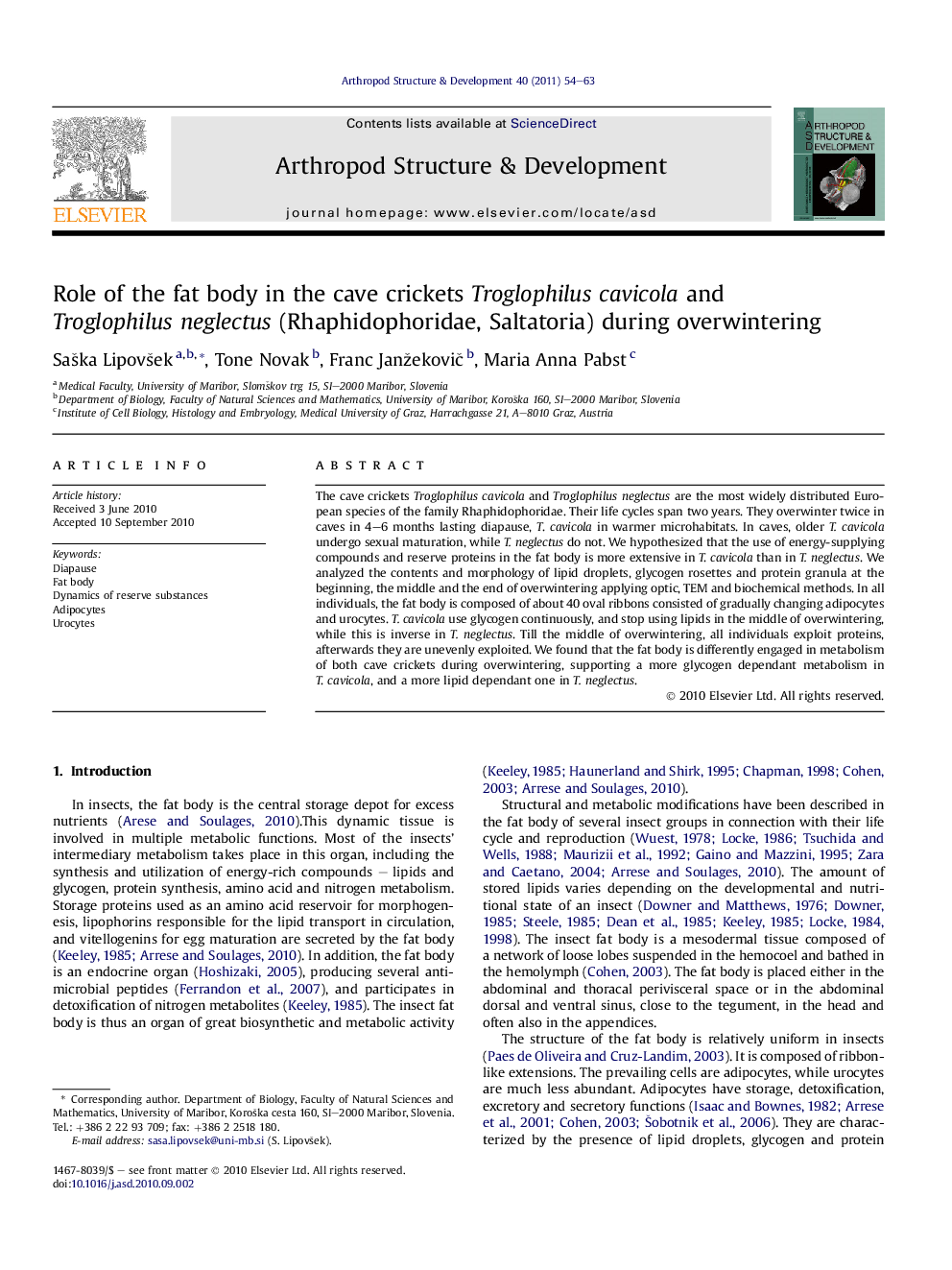| Article ID | Journal | Published Year | Pages | File Type |
|---|---|---|---|---|
| 2778863 | Arthropod Structure & Development | 2011 | 10 Pages |
The cave crickets Troglophilus cavicola and Troglophilus neglectus are the most widely distributed European species of the family Rhaphidophoridae. Their life cycles span two years. They overwinter twice in caves in 4–6 months lasting diapause, T. cavicola in warmer microhabitats. In caves, older T. cavicola undergo sexual maturation, while T. neglectus do not. We hypothesized that the use of energy-supplying compounds and reserve proteins in the fat body is more extensive in T. cavicola than in T. neglectus. We analyzed the contents and morphology of lipid droplets, glycogen rosettes and protein granula at the beginning, the middle and the end of overwintering applying optic, TEM and biochemical methods. In all individuals, the fat body is composed of about 40 oval ribbons consisted of gradually changing adipocytes and urocytes. T. cavicola use glycogen continuously, and stop using lipids in the middle of overwintering, while this is inverse in T. neglectus. Till the middle of overwintering, all individuals exploit proteins, afterwards they are unevenly exploited. We found that the fat body is differently engaged in metabolism of both cave crickets during overwintering, supporting a more glycogen dependant metabolism in T. cavicola, and a more lipid dependant one in T. neglectus.
